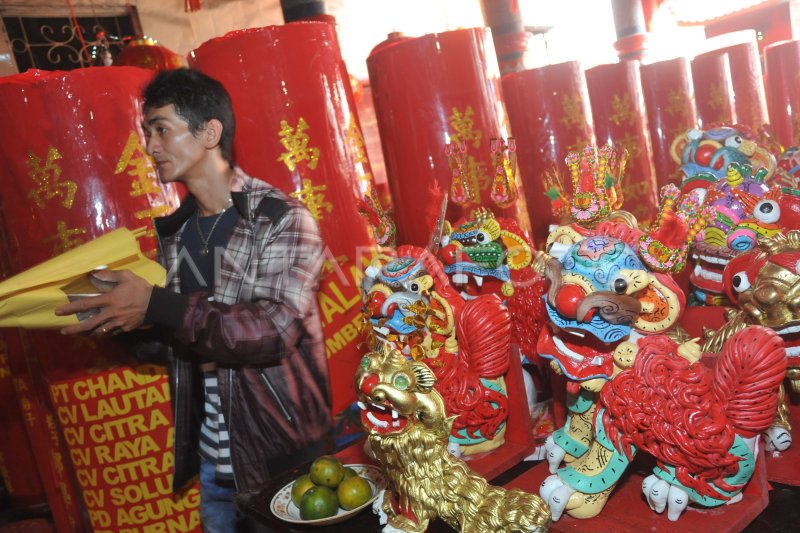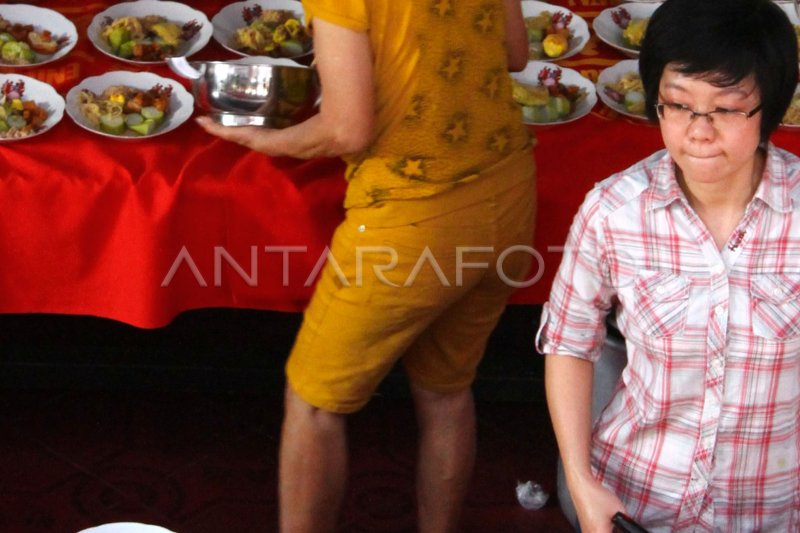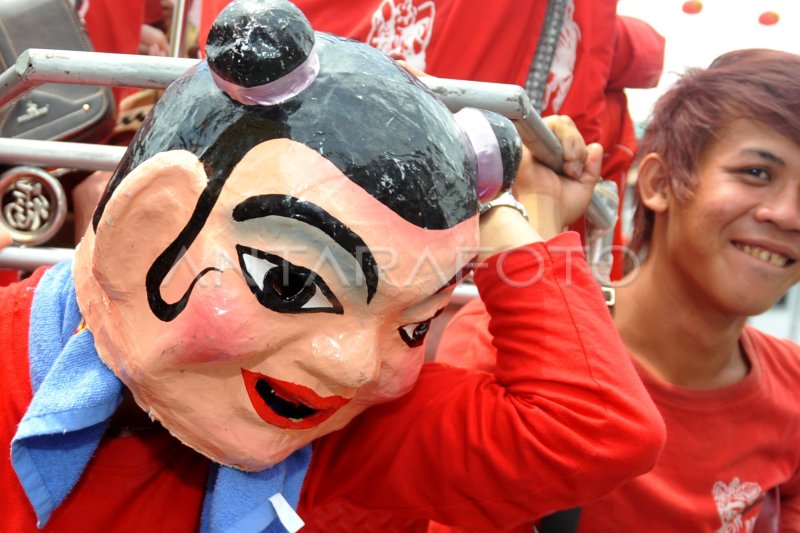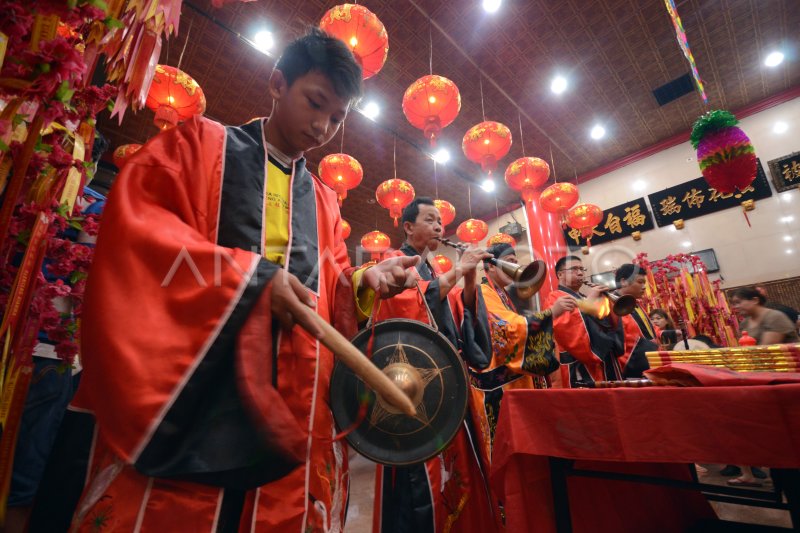Kemeriahan always feels throughout the country where the celebration of Cap Go Meh took place, especially in areas that have many Chinese ethnic populations such as in West Kalimantan, Palembang, Bangka-Belitung, Jakarta, Surabaya, Medan, Manado, to Semarang.
Cap Go Meh is the fifteenth day emblem and the last day of the Imlek celebration period. The term Cap Go Meh is literally 15 days or night after Imlek. Cap has a sense of ten, Go five, and Meh means night.
This celebration was originally celebrated by the Xie Han Dynasty (206 BC – 221 M), as a day of honor to the Thai-yi God, the highest god in the sky. When Tang Dynasty leads, this celebration began to be celebrated by the public widely. The festival is a public opportunity to have fun.

A Chinese man brought prayer paper when implementing the Cap Go Meh in Kelenteng Tri Dharma Dwi Dharma Bhakti, Pontianak, Kalbar.

A number of Chinese citizens prepare vegetable lontong food as a typical food during the celebration of Cap Go Meh in Klenteng En Ang Kiong, Malang, East Java.
Cap Go Meh is also known as the event of the office to gotong JOli Toapekong for himrak out of Kelenteng. Toapekong is literally means eyang buyut for the meaning of rejuvenation for gods.
In Indonesia this tradition is filled with a variety of activities such as Cap Go Meh’s cultural paragraphs accompanied by Dragon Cap Go Meh (liong) dance called “Nong Long” and Barongsai Cap Go Meh dance called “Nong Shi”.
At Singkawang, Kalbar, is known for the magnificent lantern parade, which is accompanied by the ancient art parade Tatung as a ritual medium to reject evil spirits. In Jakarta and the surrounding of this paragraph was also accompanied by traditional music players Tanjidor who used trumpet music instrument, tambur and bajidor (Bedug), which has been a tradition since the 18th century. In addition to Tanjidor Chinese citizens also do not forget to hid "Lontong Cap Go Meh" as its signature food.

Three heavy Chinese youths when following the 2015 Go Meh Cap Charter on Diponegoro Road, Pontianak, West Kalimantan.

Umat Konghucu held a ritual of Sembahyang Cap Go Meh or Shang Yuan in Klenteng Xian Ma, Makassar, South Sulawesi.
Now the Cap Go Meh’s paragraph is not only a Chinese society culture, but also a part of Indonesia’s cultural tradition.
Photo: Jessica Wuysang, Maulana Surya
Text: Maxum Zirconium

The number of players from Panca Bhakti Fire Extinguisher Foundation conducting exercises playing arak-arakan naga along 60 meters in Pontianak, Kalbar.

Sebuah replica liong naga participated in the 2015 Cap Go Meh in Diponegoro Road, Pontianak, West Kalimantan.
Interfoto@2015

The number of Chinese descendants assembled the statue of the Kong cho Lok waya when the celebration of Cap Go Meh in Indramayu, West Java.

The number of residents of Bandung celebrates the Culture of Cap Go Meh on Jalanan Sudirman Bandung, West Java.

The number of Panca Bhakti Fire Extinguisher Foundation players conducting exercises playing arak-arakan liong dragons along 60 meters in Pontianak, Kalbar.

